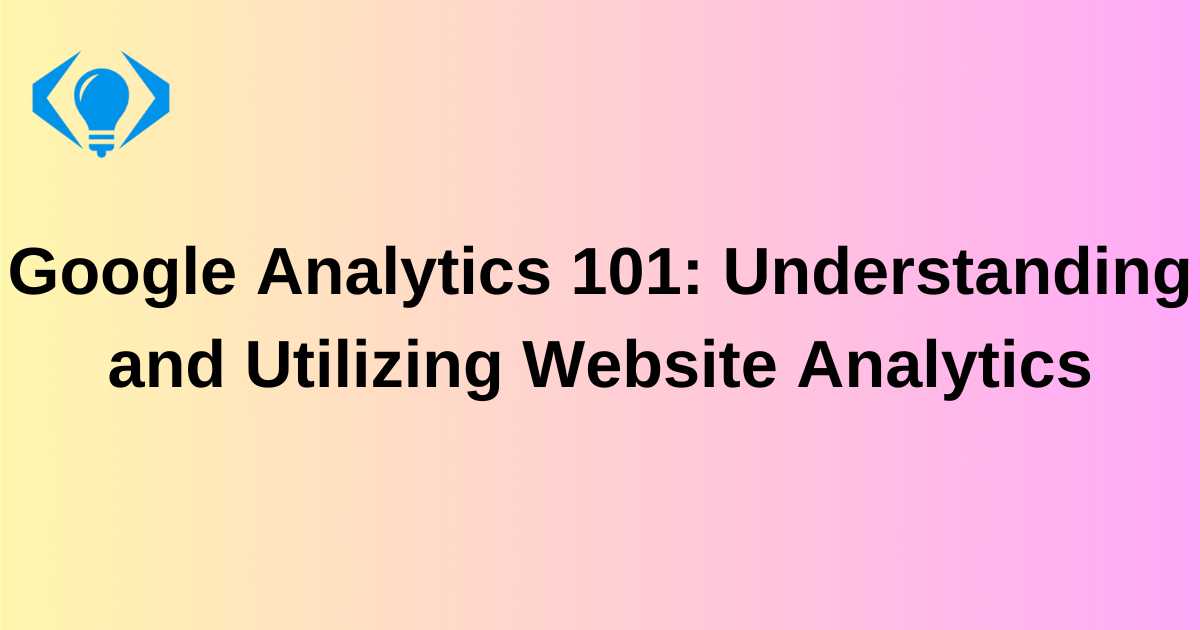
Internet of Things (IoT) Learning Resources
February 25, 2022
Choosing the Right Front-End Framework: A Comparison of Popular Options
March 7, 2022In the digital age, data plays a crucial role in making informed business decisions. When it comes to understanding user behavior on your website, Google Analytics is a powerful tool that provides valuable insights. In this blog post, we will explore the basics of Google Analytics and discuss how you can effectively utilize website analytics to optimize your online presence. Let’s get started!
What is Google Analytics?
Google Analytics is a free web analytics service offered by Google. It allows website owners to track and analyze various aspects of their website’s performance, including user behavior, traffic sources, conversion rates, and much more. By implementing a small piece of tracking code on your website, you can gain access to a wealth of data that helps you understand how users interact with your website.
Key Features of Google Analytics
Google Analytics offers a wide range of features to help you gather insights and make data-driven decisions. Here are some key features:
Audience Insights
Google Analytics provides detailed information about your website visitors, including demographics, interests, geographical location, and device used. This data enables you to understand your target audience better and tailor your marketing strategies accordingly.
Acquisition Channels
With Google Analytics, you can identify the sources of your website traffic, such as organic search, paid search, social media, or referrals. This information helps you evaluate the effectiveness of your marketing campaigns and allocate resources accordingly.
Behavior Analysis
Understanding user behavior on your website is crucial for optimizing user experience. Google Analytics allows you to track metrics such as page views, bounce rates, average session duration, and exit rates. By analyzing these metrics, you can identify areas for improvement and enhance engagement on your website.
Conversion Tracking
Whether your goal is to generate leads, sell products, or drive newsletter sign-ups, Google Analytics provides tools to track your conversions. You can set up conversion goals and track the effectiveness of your marketing efforts in terms of conversions and conversion rates.
Customizable Reports
Google Analytics offers customizable reports that allow you to visualize and analyze your website’s data based on your specific needs. You can create custom dashboards, set up automated email reports, and access real-time data to monitor your website’s performance.
Utilizing Website Analytics Effectively
To make the most of Google Analytics and website analytics in general, consider the following tips:
Set Clear Goals
Before diving into website analytics, define your goals. What key metrics are important to your business? Whether it’s increasing website traffic, improving conversion rates, or reducing bounce rates, having clear goals will guide your analysis and decision-making process.
Track Relevant Metrics
Focus on tracking metrics that align with your goals. Rather than getting overwhelmed with a plethora of data, identify the key metrics that provide meaningful insights into your website’s performance. This could include metrics like page views, conversion rates, or average session duration.
Monitor Traffic Sources
Understanding where your website traffic is coming from is essential for optimizing your marketing efforts. Monitor the acquisition channels in Google Analytics to identify which channels drive the most quality traffic to your site. This insight allows you to allocate resources effectively and refine your marketing strategies.
Analyze User Behavior
Pay attention to user behavior metrics such as bounce rates, exit rates, and time spent on page. Analyzing this data helps you identify areas where users might be leaving your site or experiencing difficulties. By optimizing user experience, you can increase engagement and encourage visitors to take desired actions.
Test and Iterate
Use Google Analytics to conduct A/B testing and experiment with different elements on your website. Test variations of landing pages, calls-to-action, or content layout to determine what resonates best with your audience. Continuous testing and iteration based on data-driven insights will lead to better results over time.
Conclusion
Google Analytics is a powerful tool that provides valuable insights into your website’s performance. By understanding and utilizing website analytics effectively, you can make informed decisions, optimize user experience, and drive business growth. Set clear goals, track relevant metrics, monitor traffic sources, analyze user behavior, and don’t forget to test and iterate. Embrace the power of website analytics and unlock its potential to enhance your online presence.




